In 2023, the El Niño climate phenomenon returned after a four-year pause. It means that the planet is in for a new wave of global warming. 2023 is likely to become the warmest year on record. The World Meteorological Organization (WMO) records average temperatures for two months in a row: June and July. And July set the record even before the month was over. The world as a whole is significantly warmer than it was a few decades ago, but 2023 stands out even against this background.
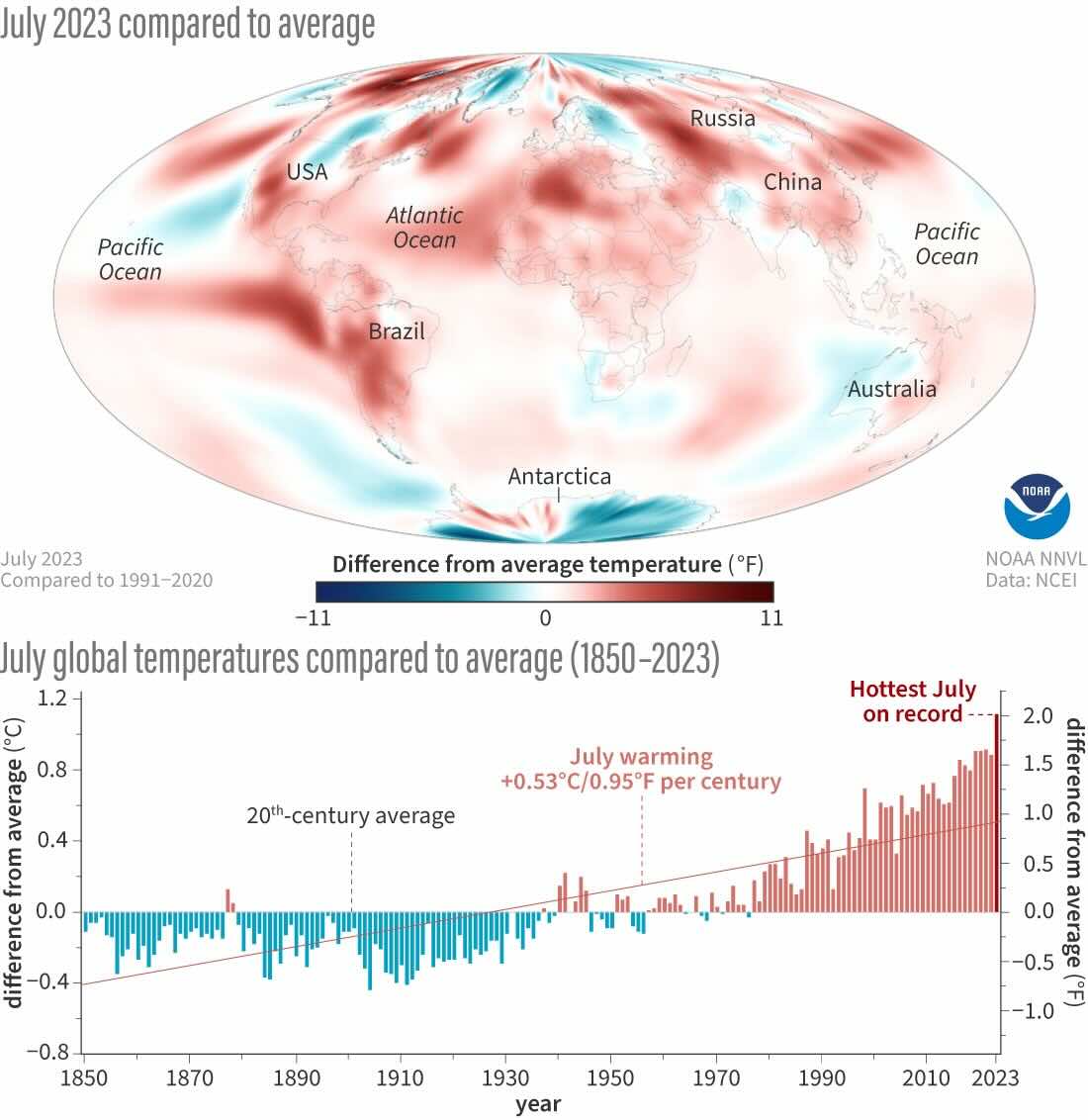
What Is El Niño?
El Niño, also known as ENSO (El Niño-Southern Oscillation), is a climate pattern in the Pacific region that is raising temperatures across the planet. Until now, we have been living in the opposite phase of this cyclical phenomenon, which is called La Niña.
During La Niña, the global temperature shifts downward from the multi-year average. La Niña gradually ended in March 2023, but even three colder months did not prevent 2023 from record-breaking temperatures. In 2024, the heat wave situation is likely to worsen dramatically, mainly because of the Pacific climate cycles.
El Niño raises the average global temperatures, but not everywhere: the weather changes differently in different regions. As the water surface warms, powerful clouds form along the typically dry Pacific coast of South America, bringing heavy rainfall. These, in turn, lead to flooding.
On the other side of the ocean, Australia and Indonesia get less rain than usual, facing droughts and fires. In southern Europe, winters become wetter and warmer, while in northern Europe they become drier and colder. If the climate phenomenon becomes strong enough by the winter of 2023-2024, northern Europe could face freezing temperatures.
You can find more information regarding La Niña vs El Niño in our dedicated article.
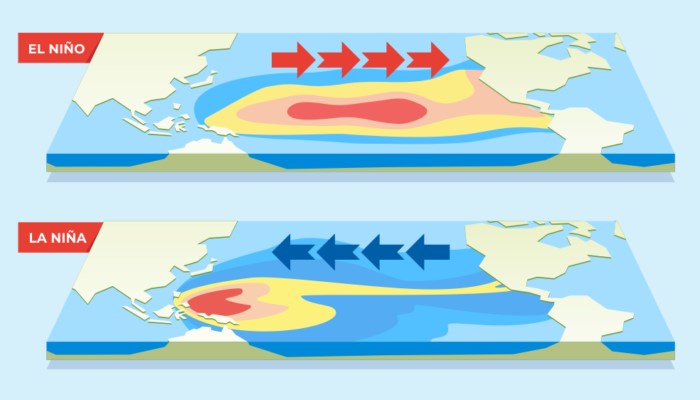 Source: AHA Centre
Source: AHA Centre
El Niño Snow Forecast for North America
In addition to summer and winter weather, El Niño impacts the snowfall patterns. This is because ENSO changes the jet stream, a high-altitude air current. This long atmospheric current (up to 7 miles or 11 km) carries moisture and precipitation, influencing snowfall.
During El Niño, a low-pressure area forms in the North Pacific. This typically weakens the polar jet stream and strengthens the subtropical jet stream over the southern United States.
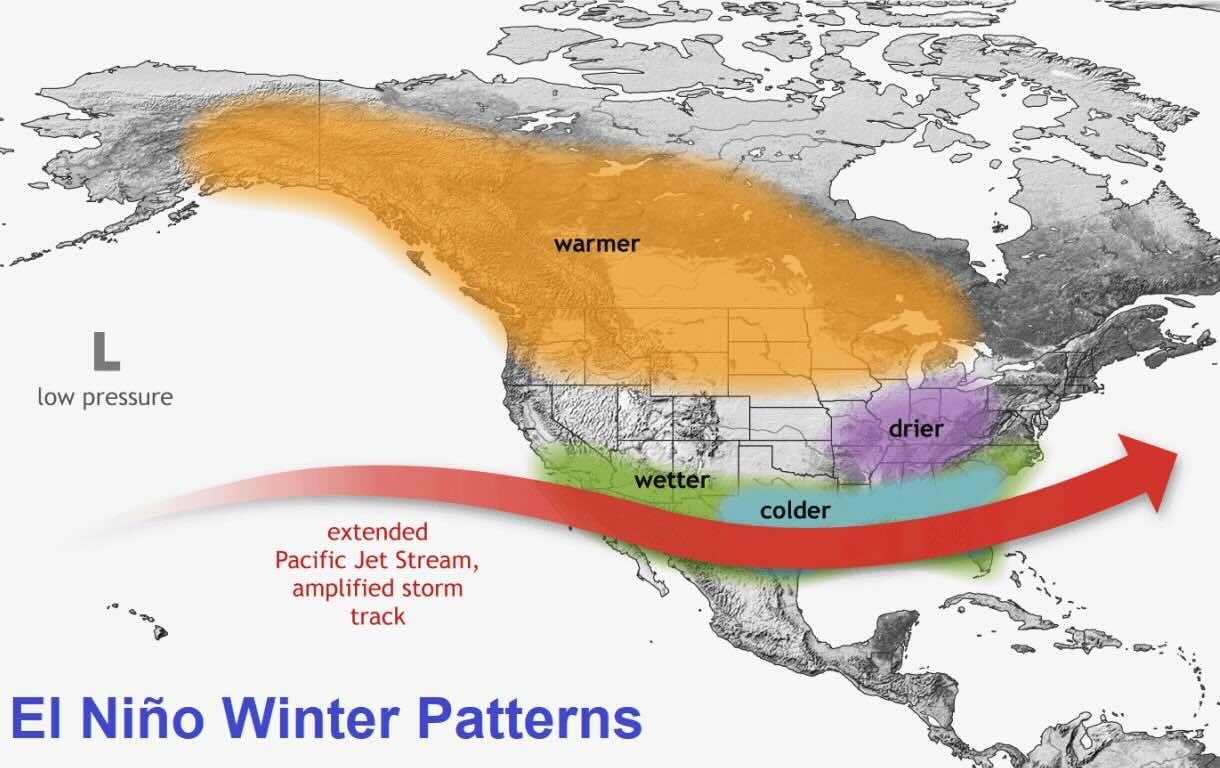 Source: NOAA Climate
Source: NOAA Climate
The strong subtropical jet stream means lower pressure, cooler temperatures, and increased moisture. All of this raises the chances for snowfall in the central and eastern United States, provided there is enough cold air. Conversely, there’s less snowfall in the deep southern United States, Ohio Valley, Midwest, northern Plains, northern Rockies, and Pacific Northwest.
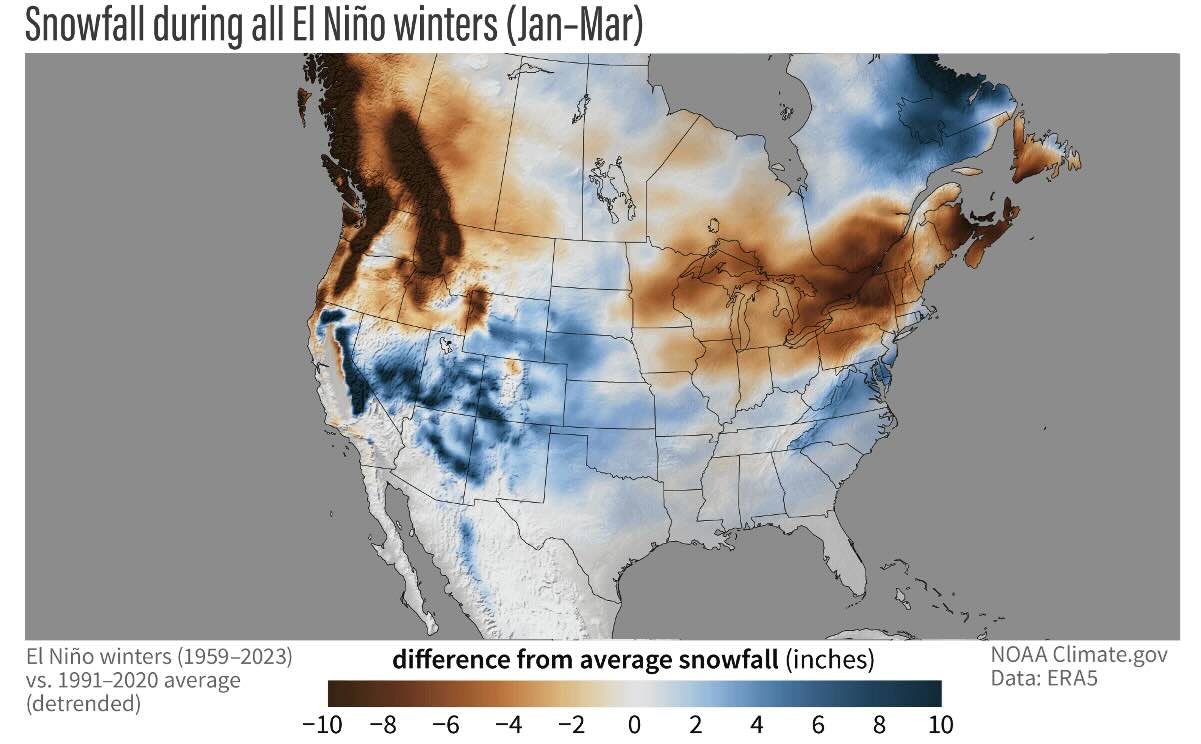
Why Is the El Niño Impact on Weather That Strong?
El Niño influences not only local, but also global climate patterns. The ocean and atmosphere are closely linked. The flow of heat and moisture from the ocean to the atmosphere, which increases during ENSO, quickly spreads across the planet. To make matters worse, the Pacific Ocean is very large, covering about a third of the Earth’s land area. In essence, temperature fluctuations in the tropical Pacific Ocean cause a global chain reaction. Therefore, El Niño effects can be traced back to temperate, subpolar, and even polar latitudes. Climate change cannot be isolated in one region - it is a problem for the entire planet.
Historical Weather-Related Events Associated with El Niño
Researchers associate bad harvests in Europe in the late 1700s and famine in northern China in 1876, which killed 13 million people, with ENSO. In 1972, this climate pattern decimated the anchovy population off the Peruvian coast, undermining the country’s fishing industry.
 Source: Pictorial Press Ltd / Alamy Stock Photo
Source: Pictorial Press Ltd / Alamy Stock Photo
Droughts associated with El Niño increase the likelihood of wildfires, which release carbon into the atmosphere and speed up climate change. In Australia, this is particularly alarming: since 1900, most ENSO events have caused widespread drought in the country.
In addition, El Niño reduces economic growth. Scientists recently estimated the damage to the world economy in 1982-1983 and 1997-1998 at $4.1 trillion and $5.7 trillion, respectively. El Niño 2023 may cost mankind $3 trillion. According to researchers’ calculations , by the end of the century, the economic impact of El Niño will reach $84 trillion.
How Does the World Get Ready for El Niño
Here are some examples of El Niño preparedness worldwide:
- In March 2023, the Peruvian government announced that it would invest almost a billion dollars to deal with the climate change effects and ENSO weather.
- The World Bank recommends developing early warning systems for emergencies, introducing heat-resistant crop varieties, expanding social protection coverage, and subsidizing food imports.
- Australian experts warn that El Niño may increase the load on energy systems, as people will use air conditioners more during the heatwave. At the same time, drought will reduce electricity generation at hydroelectric power plants. To mitigate the risks, they recommend stocking up on diesel generators and installing solar panels.
Does El Niño Have Any Benefits?
While some regions are suffering from ENSO, others are better off. The number of Atlantic hurricanes is likely to decrease during El Niño, which is good news for Haiti, Cuba, Florida, and Texas, for example.
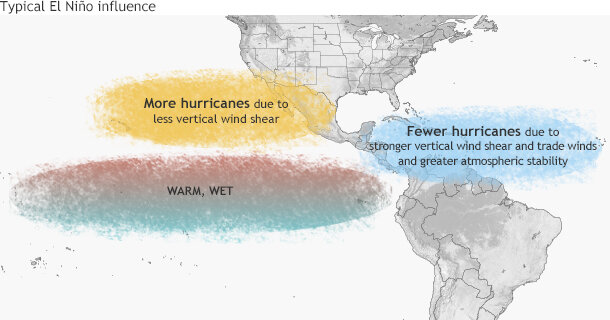 Source: NOAA Climate.gov and Gerry Bell
Source: NOAA Climate.gov and Gerry Bell
ENSO can also bring precipitation to dry countries, benefiting farmers. Additionally, El Niño can make winters warmer in some areas of the northern United States, Canada, and central Europe. This can save money on heating and make traveling safer. Finally, global attention to the ENSO phenomenon raises climate change awareness in people.






